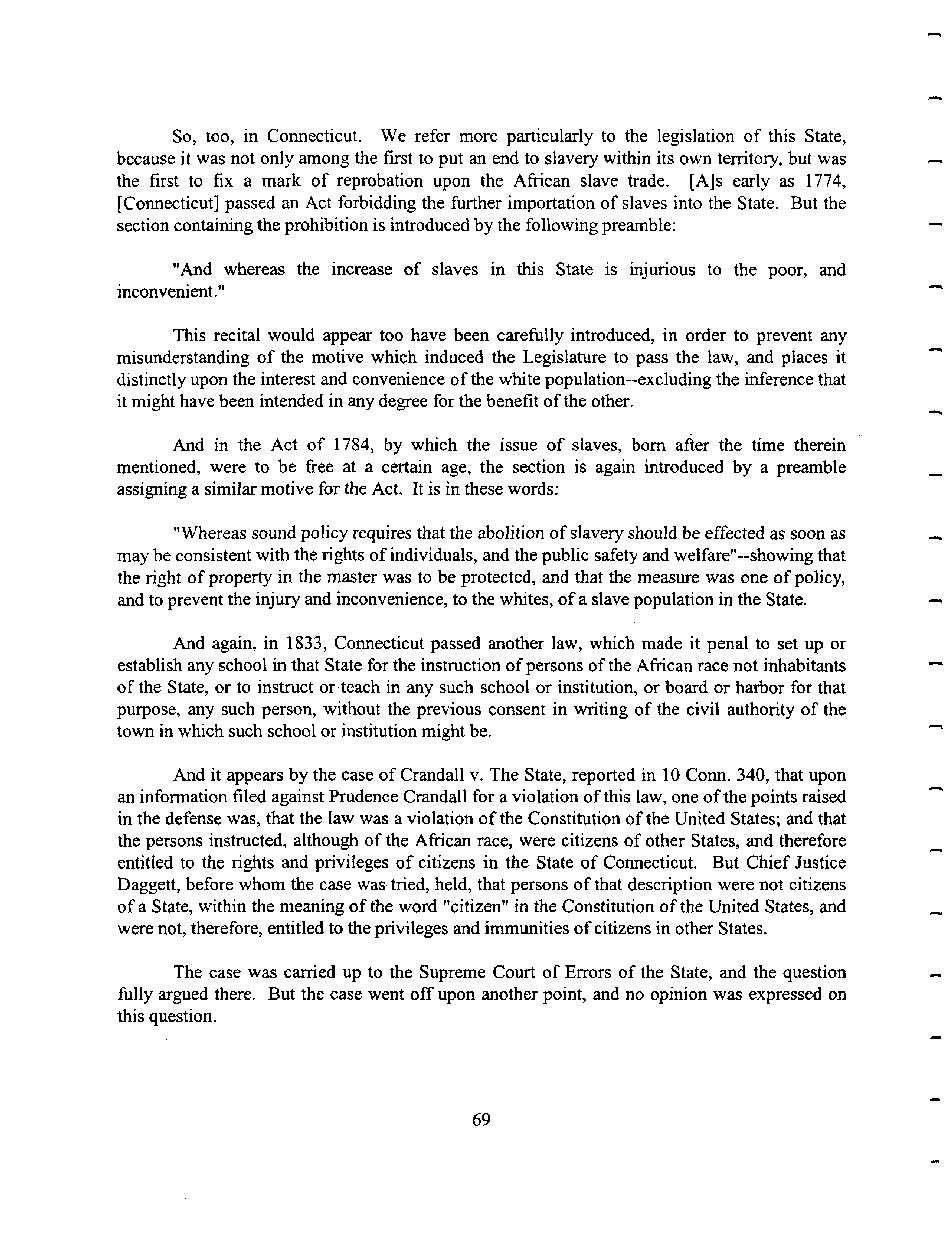|
So, too, in Connecticut. We refer more particularly to the legislation of this State,
because it was not only among the first to put an end to slavery within its own territory, but was
the first to fix a mark of reprobation upon the African slave trade. [A]s early as 1774,
[Connecticut] passed an Act forbidding the further importation of slaves into the State. But the
section containing the prohibition is introduced by the following preamble:
"And whereas the increase of slaves in this State is injurious to the poor, and
inconvenient."
This recital would appear too have been carefully introduced, in order to prevent any
misunderstanding of the motive which induced the Legislature to pass the law, and places it
distinctly upon the interest and convenience of the white population—excluding the inference that
it might have been intended in any degree for the benefit of the other.
And in the Act of 1784, by which the issue of slaves, bom after the time therein
mentioned, were to be free at a certain age, the section is again introduced by a preamble
assigning a similar motive for the Act. It is in these words:
"Whereas sound policy requires that the abolition of slavery should be effected as soon as
may be consistent with the rights of individuals, and the public safety and welfare"~showing that
the right of property in the master was to be protected, and that the measure was one of policy,
and to prevent the injury and inconvenience, to the whites, of a slave population in the State.
And again, in 1833, Connecticut passed another law, which made it penal to set up or
establish any school in that State for the instruction of persons of the African race not inhabitants
of the State, or to instruct or teach in any such school or institution, or board or harbor for that
purpose, any such person, without the previous consent in writing of the civil authority of the
town in which such school or institution might be.
And it appears by the case of Crandall v. The State, reported in 10 Conn. 340, that upon
an information filed against Prudence Crandall for a violation of this law, one of the points raised
in the defense was, that the law was a violation of the Constitution of the United States; and that
the persons instructed, although of the African race, were citizens of other States, and therefore
entitled to the rights and privileges of citizens in the State of Connecticut. But Chief Justice
Daggett, before whom the case was tried, held, that persons of that description were not citizens
of a State, within the meaning of the word "citizen" in the Constitution of the United States, and
were not, therefore, entitled to the privileges and immunities of citizens in other States.
The case was carried up to the Supreme Court of Errors of the State, and the question
fully argued there. But the case went off upon another point, and no opinion was expressed on
this question.
69
�
|

